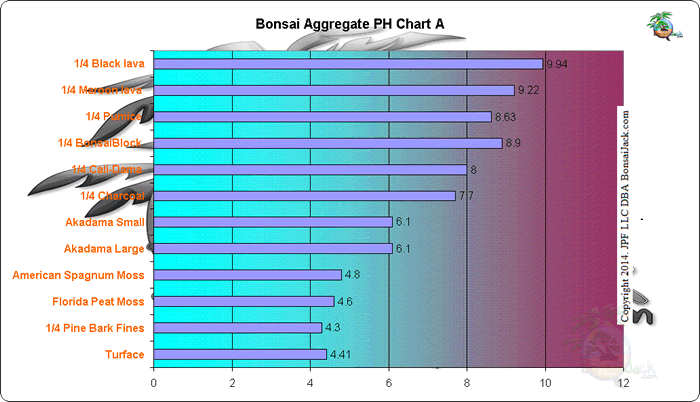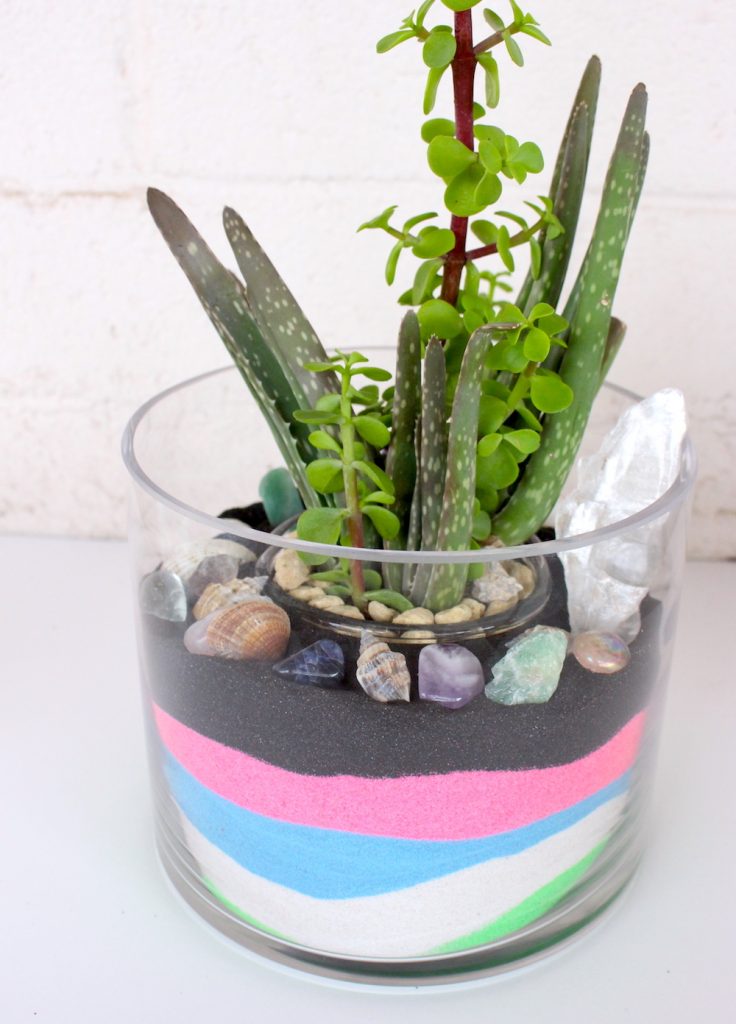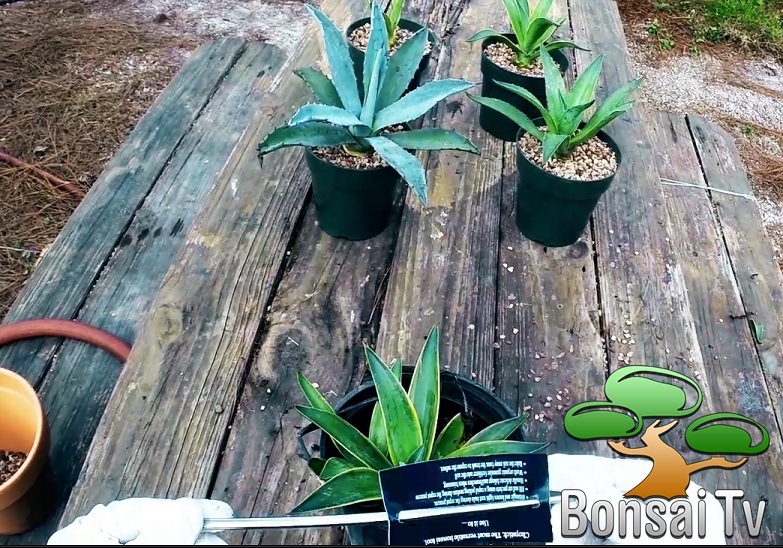Bonsai Soil / Aggregate Test Report 2014
Originally posted 12-30-2014
Bonsai Soil / Aggregate Test Report 2014
This post documents my journey to find the perfect bonsai soil mix. Hundreds of lab tests were performed. Two soil mixes were developed from these tests. This
is a long technical post. Scroll to the bottom to view the results if you prefer to skip the technical details.
Chart A: This chart shows the pH value of several
ingredients.

Chart B: This chart shows bulk density. Aggregate weight per cubic inch.

Chart 3: This chart shows the increase of aggregate water weight over the original dry weight, over time. Example: Pumice increased by 16.49% after soaking in water for 24 hours. After 24 hours of drying it was 5.41% heavier than the dry weight. After 48 hours of drying it was only .27% percent heavier than the original dry weight.
Pumice is a great aggregate as it absorbs and releases water in short period of time. The opposite would be an aggregate such as Turface which absorbs water and holds onto it. Pumice and pine bark fines are perfect ingredients and should be included in every mix.
Cali-Dama is the heaviest aggregate. It absorbs the least amount of water.

Chart 4: Lets look at the data from another point of view.
Here is a chart showing the actual moisture absorption and retention rates regardless of the aggregate weight.
Same data, different aspect. Example: Maroon Lava absorbed .088 ounce of water. After 24 hours of drying the aggregate retained .042 ounces of the original .088 ounces. After 48 hours that value decreased to .021 ounces. A good result.
Black lava, pumice, BonsaiBlock and pine bark fines also scored well.

This section of the report will cover soil mix pH levels using aggregates we offer. The tests were performed in order to establish two good universal mixes. Its a bit
complicated.
Refer to chart 7 for organic mixes and chart 8 for inorganic mixes. Locate a mix of interest and note the mix number. Example 11110A. Then refer to chart 5 or 6 to view the pH value.
The charts show each ingredient by part. Example: 221000 contains two parts BonsaiBlock, two parts Pumice and one part Pine Bark Fines. Here is the legend…
BBLOCK PUMICE PBF LAVA TURFACE CHARCOAL
0=0 parts
1=1 part
2=2 parts
A=10% of a part
B=20% of a part
C=33% of a part
D=50% of a part
E=75% of a part
F=5% of a part




Note on above charts: You can see how some aggregates react to each other. Turface for example. A little bit of this aggregate will affect your pH. Its a great acidifier in controlled portions. The pH difference between a mix containing a little or a lot of Turface is miniscule.
This chart shows water absorption and release rates of 4 mixes over time. Two are BonsaiJack and the other two are popular mixes here in Florida. The ideal soil mix will absorb a good amount of water and release the majority of it between watering. Most bonsai are watered every 24 to 48 hours. One mix contains 7 digits. The additional digit is Akadama.

This chart shows the pH value of the same four mixes. The ideal universal pH for most container plants is 6.2. This is based on a report by Neil Mattson from Cornell. The report can be viewed HERE

RESULTS. My preferred soil mixes.
BonsaiJack 221 Organic Mix. This mix contains 40% BonsaiBlock, 40% Pumice and 20% Pine Bark Fines. The mix has a consistent 1/4 inch particle size with great absorption and release rates. The pH level is 6.4, slightly acidic.
BonsaiJack 11011 Inorganic Mix. This contains 25 percent each of BonsaiBlock, Pumice, Maroon Lava and Turface. It has a pH value of 6.7, slightly acidic. This mix has good water absorption and release rates. The mix contains a small amount of Turface that does not affect drainage or evap rates.
These soils and or ingredients for each can be purchased HERE.
Thanks for reading. Constructive feedback is always appreciated.
If you would like to see a mix or aggregate included in my next report please prepare a 2.5 quart sample and contact us via email.
By Bonsai Jack












